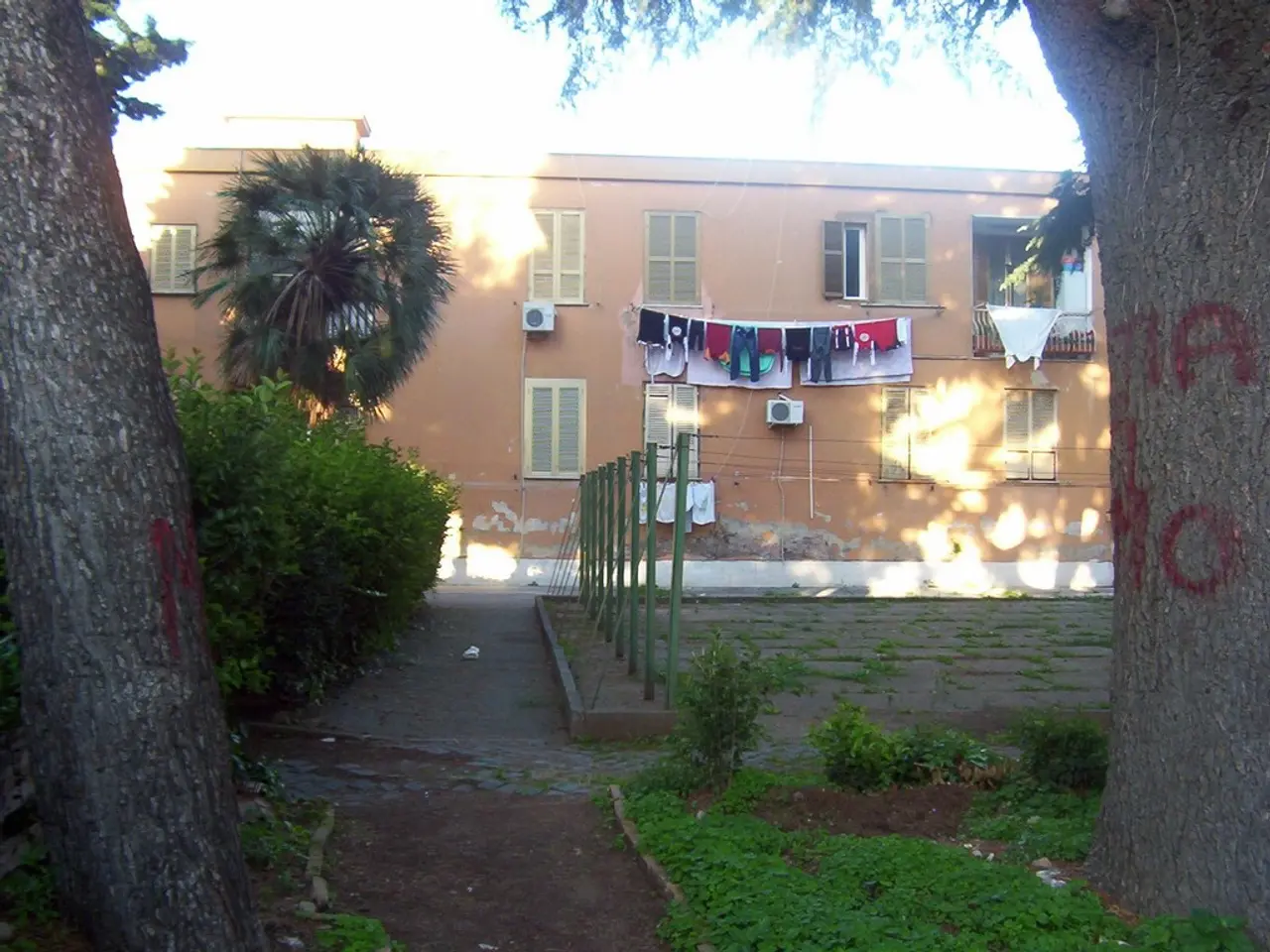Working Mechanism of a Portable Air Conditioner Unit:
In the heat of summer, staying cool is essential. Two popular options for air conditioning are portable and fixed units. This article will explore the features and benefits of a new portable air conditioning unit.
Portable air conditioning units draw warm air from a room, extract heat, and blow cool air back into the room. These units are ideal for smaller spaces, as they can be easily moved around. However, they do require venting for waste heat, either through an exhaust hose, window, door, cat flap, or purpose-made duct hole.
One such portable air conditioner suitable for room sizes up to 9-14m² is a white model now available. This unit offers 4 operating modes, including sleep mode and a dehumidifying function, providing versatility for various comfort needs. It is operated via remote control and app, offering convenience and ease of use.
A water container is required for the condensation produced during the cooling process. The size of portable air conditioning units is approximately that of large vacuum cleaners, making them compact and mobile, with wheels for easy transportation.
Modern portable air conditioning units use more environmentally friendly refrigerants and, unlike their predecessors, the refrigerant is hermetically sealed and should not leak, ensuring safety and minimal impact on the environment.
In terms of energy consumption, a portable air conditioning unit uses between 600W and 1300W per hour, producing nearly three times that in cooling effect. The cost to run an air conditioning unit for one hour is between 13p and 29p. Depending on the humidity, a portable air conditioning unit can fill a bucket with condensation in a few hours.
Fixed air conditioning units, on the other hand, can run in reverse for heating and can be installed in multiple rooms. Up to around 10 indoor units can be connected to one outdoor fan unit. The installation process involves putting a fan unit outside the building and another fan unit inside, connected via refrigerant pipes and fixed in place.
The cost of a single room fixed air conditioning unit starts at around £1000 for installation, while the cost for a multi-split unit starts at around £1100 per room. Fixed air conditioning units offer greater coverage and are more suitable for larger spaces or multiple rooms.
An interesting combination for portable air conditioning units is the use of solar photovoltaic panels to provide electricity. This setup allows for the direct use of electricity generated during peak sunlight hours, making it an eco-friendly solution for cooling needs.
In conclusion, both portable and fixed air conditioning units have their advantages. Portable air conditioners offer mobility, versatility, and convenience, while fixed air conditioning units provide greater coverage and are more suitable for larger spaces or multiple rooms. With the new portable air conditioning unit offering 4 operating modes, including sleep mode and dehumidifying function, it is an excellent choice for those seeking comfort and convenience in a compact package.
Read also:
- Peptide YY (PYY): Exploring its Role in Appetite Suppression, Intestinal Health, and Cognitive Links
- Toddler Health: Rotavirus Signs, Origins, and Potential Complications
- Digestive issues and heart discomfort: Root causes and associated health conditions
- House Infernos: Deadly Hazards Surpassing the Flames








